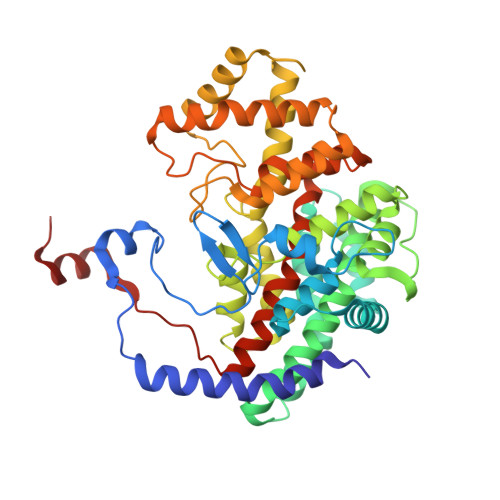A very short hydrogen bond provides only moderate stabilization of an enzyme-inhibitor complex of citrate synthase.
Usher, K.C., Remington, S.J., Martin, D.P., Drueckhammer, D.G.(1994) Biochemistry 33: 7753-7759
- PubMed: 8011640
- DOI: https://doi.org/10.1021/bi00191a002
- Primary Citation of Related Structures:
1CSH, 1CSI - PubMed Abstract:
Two extremely potent inhibitors of citrate synthase, carboxyl and primary amide analogues of acetyl coenzyme A, have been synthesized. The ternary complexes of these inhibitors with oxaloacetate and citrate synthase have been crystallized and their structures analyzed at 1.70- and 1.65-A resolution, respectively. The inhibitors have dissociation constants in the nanomolar range, with the carboxyl analogue binding more tightly (Ki = 1.6 nM at pH 6.0) than the amide analogue (28 nM), despite the unfavorable requirement for proton uptake by the former. The carboxyl group forms a shorter hydrogen bond with the catalytic Asp 375 (distance < 2.4 A) than does the amide group (distance approximately 2.5 A). Particularly with the carboxylate inhibitor, the very short hydrogen bond distances measured suggest a low barrier or short strong hydrogen bond. However, the binding constants differ by only a factor of 20 at pH 6.0, corresponding to an increase in binding energy for the carboxyl analogue on the enzyme of about 2 kcal/mol more than the amide analogue, much less than has been proposed for short strong hydrogen bonds based on gas phase measurements [> 20 kcal/mol (Gerlt & Gassman, 1993a,b)]. The inhibitor complexes support proposals that Asp 375 and His 274 work in concert to form an enolized form of acetyl-coenzyme A as the first step in the reaction.
Organizational Affiliation:
Institute of Molecular Biology, University of Oregon, Eugene 97403.
















